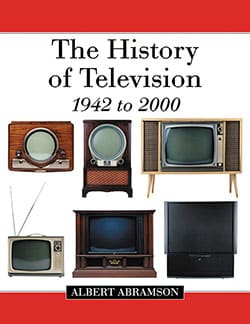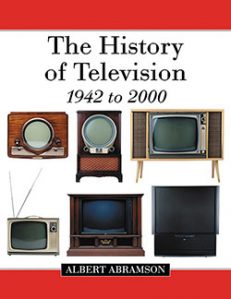The History of Television, 1942 to 2000
$75.00
In stock
About the Book
Albert Abramson published (with McFarland) in 1987 a landmark volume titled The History of Television, 1880–1941 (“massive…research”—Library Journal; “voluminous documentation”—Choice; “many striking old photos”—The TV Collector). At last he has produced the follow-up volume; the reader may be assured there is no other book in any language that is remotely comparable to it. Together, these two volumes provide the definitive technical history of the medium. Upon the development in the mid–1940s of new cameras and picture tubes that made commercial television possible worldwide, the medium rose rapidly to prominence. Perhaps even more important was the invention of the video tape recorder in 1956, allowing editing, re-shooting and rebroadcasting.
This second volume, 1942 to 2000 covers these significant developments and much more. Chapters are devoted to television during World War II and the postwar era, the development of color television, Ampex Corporation’s contributions, television in Europe, the change from helical to high band technology, solid state cameras, the television coverage of Apollo II, the rise of electronic journalism, television entering the studios, the introduction of the camcorder, the demise of RCA at the hands of GE, the domination of Sony and Matsushita, and the future of television in e-cinema and the 1080 P24 format. The book is heavily illustrated (as is the first volume).
About the Author(s)
Bibliographic Details
Albert Abramson
Foreword by Christopher H. Sterling
Format: softcover (8.5 x 11)
Pages: 319
Bibliographic Info: 364 photos, notes, bibliography, index
Copyright Date: 2008 [2003]
pISBN: 978-0-7864-3243-1
eISBN: 978-1-4766-0639-2
Imprint: McFarland
Table of Contents
Acknowledgments vi
Foreword ix
Introduction 1
1 Television and World War II (1942–1945) 3
2 The Postwar Era (1946–1949) 18
3 The Second NTSC and Color (1950–1953) 37
4 The Ampex Revolution (1954–1956) 60
5 Europe Turns Down NTSC (1957–1960) 77
6 From Helicals to High Band (1961–1964) 92
7 Solid-State Cameras (1965–1967) 105
8 Television’s Finest Hour: Apollo 11 (1968–1971) 122
9 The Rise of Electronic Journalism (1972–1976) 140
10 Television Enters the Studios (1977–1979) 173
11 Introduction of the Camcorder (1980–1984) 186
12 The Death of RCA, or the G.E. Massacre (1985–1989) 206
13 The Grand Alliance (1990–1994) 232
14 “E-Cinema” and the 1080p24 Format (1995–2000) 252
Notes 265
Selected Bibliography 301
Index 303
Book Reviews & Awards
Choice Outstanding Academic Title. A Library Journal Starred Review. Finalist, Moving Image Book Award—Kraszna-Krausz Foundation
“the foremost reference work on the technical history of TV…no reference work available in print right now matches the attention to detail…significant…should stand as the authority for years to come…highly recommended”—Library Journal; “spellbinding…enlightening and eye-opening…should be required reading for all communication and television majors and for anyone developing new [media]…highly recommended”—Choice; “comprehensive, well-documented, highly-illustrated”—Chattanouga Airwaves; “it’s all covered…takes in the entire world scene and gives credit to the work done in other countries…mind-boggling”—Big Reel; “highly recommended”—E-Streams; “an important book”—Communication Booknotes Quarterly; “a major achievement and a fascinating read”—Kraszna-Krausz Foundation.





